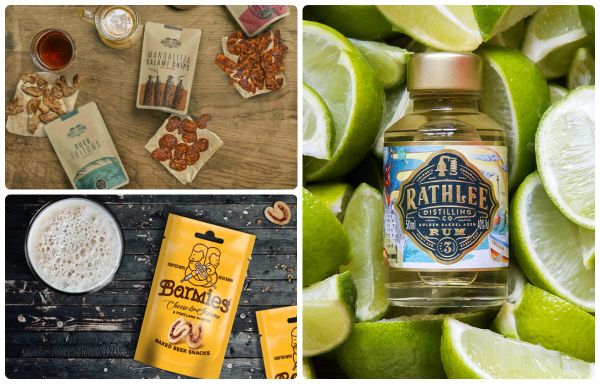Last Updated on: 22nd November 2023, 03:00 am
Selling on Amazon has become a popular way for individuals and businesses to reach a wider audience and increase their sales. With over 300 million active users, Amazon is one of the largest online marketplaces in the world. Whether you’re a small business owner or an individual looking to sell your products, Amazon provides a platform to reach a vast number of potential customers.
To start selling on Amazon, you’ll need to create an account and set up your seller profile. This involves providing information about your business, such as your company name, address, and tax identification number. Once your profile is set up, you can start listing your products on Amazon’s marketplace. It’s important to optimise your product listings with clear and detailed descriptions, high-quality images, and competitive pricing to attract customers and increase your sales.
Ecommerce has revolutionised the way we shop and do business, and Amazon has played a significant role in this transformation. Selling on Amazon can be a lucrative opportunity for businesses and individuals alike, but it requires a strategic approach and attention to detail. In the following sections, we’ll explore the steps involved in selling on Amazon and provide tips on how to optimise your listings and increase your sales.
Creating a Seller Account
If you are new to selling on Amazon, you will need to create a seller account. It is a simple process, and you can start selling on Amazon once you have completed it.
Steps to Create a Seller Account
- Go to the Amazon Seller Central website and click on the “Register Now” button.
- Enter your personal information, including your name, email address, and phone number.
- Choose the type of seller account you want to create. There are two types of seller accounts: Individual and Professional. Individual accounts are best if you plan to sell fewer than 40 items per month, while Professional accounts are for those who plan to sell more than 40 items per month.
- Provide your business information, including your business name, address, and tax identification number.
- Set up your payment information. You will need to provide a credit card or bank account information to receive payments from Amazon.
- Finally, verify your identity by providing your phone number and entering the verification code sent to you.
Once you have completed these steps, your seller account will be created, and you can start listing your products on Amazon. However, before you start selling, make sure to familiarize yourself with Amazon’s policies and guidelines to avoid any issues with your account.
As a new seller, it is important to understand the fees associated with selling on Amazon. Amazon charges a referral fee based on the category of the product you are selling and a closing fee for media products such as books, DVDs, and CDs. Additionally, there is a monthly subscription fee for Professional accounts.
In conclusion, creating a seller account on Amazon is a straightforward process that can be completed in just a few steps. By following the guidelines and familiarizing yourself with Amazon’s policies, you can start selling on Amazon and reach millions of potential customers.
Selling on Amazon
Selling on Amazon is a great way to reach millions of customers and grow your business. However, it is important to understand the different selling plans and product listing requirements before you get started.
Different Selling Plans
Amazon offers two main selling plans: Individual and Professional. The Individual plan is best for those who sell fewer than 40 items per month, while the Professional plan is better for those who sell more. The Professional plan has a monthly subscription fee, but it allows you to access more features such as inventory management and bulk listing.
Product Listing and Description
When listing your product on Amazon, it is important to provide a clear and detailed description. This includes using high-quality images, relevant keywords, and accurate product information. You should also consider using bullet points to highlight key features and benefits.
To ensure your product is visible to potential customers, it is important to research and use relevant keywords. This will help your product appear in search results when customers are looking for similar products.
Referral Fees
Amazon charges referral fees for each item sold on their platform. The fee varies depending on the category of the product, so it is important to research and understand the fees before listing your product.
Product Research
Before listing your product on Amazon, it is important to conduct thorough product research. This includes researching the competition, identifying potential suppliers, and determining the best pricing strategy.
Retail Arbitrage and Private Labeling
Two popular strategies for selling on Amazon are retail arbitrage and private labeling. Retail arbitrage involves buying products from retail stores and reselling them on Amazon, while private labeling involves creating your own branded products to sell on Amazon.
Supplier and UPC Codes
When sourcing products for your Amazon store, it is important to work with reputable suppliers and obtain UPC codes for each product. UPC codes are required for listing products on Amazon and help ensure product accuracy and quality.
Amazon Fees
In addition to referral fees, Amazon also charges fees for storage and fulfillment services. It is important to understand these fees and factor them into your pricing strategy.
White Labeling
White labeling involves purchasing products from a supplier and adding your own branding to them. This can be a great way to create unique products to sell on Amazon and differentiate yourself from competitors.
In summary, selling on Amazon can be a great way to reach a large audience and grow your business. However, it is important to understand the different selling plans, product listing requirements, and fees before getting started. Conducting thorough product research and using relevant keywords can help ensure your products are visible to potential customers.
Fulfillment Options
When selling on Amazon, there are two main fulfillment options available: Fulfillment by Amazon (FBA) and Fulfilled by Merchant (FBM). Each option has its own advantages and disadvantages, and it’s important to understand them before deciding which one to use.
Fulfillment by Amazon (FBA)
Fulfillment by Amazon (FBA) is a service offered by Amazon that allows sellers to store their products in Amazon’s fulfillment centers. When a customer places an order, Amazon picks, packs, and ships the product on behalf of the seller. FBA also handles customer service and returns.
One of the main advantages of using FBA is that it can help increase sales. Products that are fulfilled by Amazon are eligible for Amazon Prime, which means that customers who are subscribed to Amazon Prime can receive free two-day shipping. This can lead to more sales and higher customer satisfaction.
FBA also saves time and effort for sellers as they don’t have to worry about packing and shipping orders themselves. Additionally, FBA provides access to Amazon’s world-class customer service, which can help resolve any issues that may arise.
However, there are some downsides to using FBA. Firstly, it can be more expensive than FBM as Amazon charges fees for storage, picking, packing, and shipping. Secondly, sellers have less control over the shipping process, which can lead to delays or mistakes. Finally, FBA requires sellers to comply with Amazon’s strict guidelines, which can be time-consuming and costly.
Fulfilled by Merchant (FBM)
Fulfilled by Merchant (FBM) is a fulfillment option where the seller is responsible for storing, packing, and shipping the products themselves. This means that the seller has more control over the shipping process and can potentially save money on fees.
One of the main advantages of using FBM is that it can be more cost-effective than FBA. Sellers only pay for the shipping and storage costs, which can be lower than FBA fees. Additionally, FBM gives sellers more control over the shipping process, which can lead to faster shipping times and better customer satisfaction.
However, FBM also has some disadvantages. Firstly, sellers have to handle all aspects of the fulfillment process themselves, which can be time-consuming and difficult. Secondly, FBM products are not eligible for Amazon Prime, which may lead to lower sales and customer satisfaction. Finally, FBM sellers are responsible for customer service and returns, which can be challenging.
In summary, both FBA and FBM have their own advantages and disadvantages. It’s important to consider the specific needs of your business before deciding which option to use.
Shipping and Pricing
Shipping Options
When it comes to shipping, Amazon offers two primary options: Fulfilled by Amazon (FBA) and Merchant Fulfilled Network (MFN). With FBA, Amazon handles the entire shipping process for you, including storage, packing, and shipping. This can be ideal for sellers who have a large inventory and want to focus on other aspects of their business. However, FBA comes with additional fees, so it’s important to factor that into your pricing strategy.
On the other hand, with MFN, you are responsible for packing and shipping your own products. This can be more cost-effective for smaller sellers, but it requires more time and effort. It’s important to choose a reliable shipping carrier and ensure that your products are packed securely to avoid any damage during transit.
Pricing Strategies
Pricing your products correctly is crucial for success on Amazon. It’s important to research your competitors and set prices that are competitive but still profitable. Here are a few pricing strategies to consider:
- Cost-plus pricing: This involves adding a markup to your product’s cost to determine the selling price. It’s a simple and straightforward approach, but it may not take into account market demand or competition.
- Dynamic pricing: This involves adjusting your prices based on market demand and competition. You can use tools like Amazon’s Repricer or third-party software to automate this process.
- Bundling: This involves combining multiple products into a single package and offering a discount. This can be a great way to increase sales and move slow-moving inventory.
- Promotions: Offering promotions like discounts or free shipping can be a great way to attract customers and increase sales. However, it’s important to ensure that your promotions are still profitable for your business.
In conclusion, choosing the right shipping option and pricing strategy is crucial for success on Amazon. By considering your options and researching your competitors, you can set yourself up for success and grow your business on the platform.
Advertising on Amazon
Types of Advertising
Amazon offers several types of advertising to help sellers increase their visibility and sales. These include:
- Sponsored Products: These ads appear in search results and on product detail pages, and are targeted to specific keywords or products.
- Sponsored Brands: These ads feature a custom headline, logo, and multiple products, and appear at the top of search results.
- Sponsored Display: These ads appear on product detail pages and are targeted to audiences based on their interests and shopping behavior.
Creating an Ad Campaign
To create an ad campaign on Amazon, follow these steps:
- Choose the type of ad you want to create.
- Set your budget and bid for keywords or placements.
- Select your targeting options, such as keywords, products, or audiences.
- Create your ad creative, including images and text.
- Launch your campaign and monitor its performance.
It’s important to continually optimize your campaigns by adjusting your bids, targeting, and creative based on performance data.
Advertising on Amazon can be a powerful way to increase your sales and visibility on the platform. By understanding the different types of advertising and following best practices for creating and optimizing campaigns, you can effectively reach your target audience and drive more sales.
Amazon Seller App
The Amazon Seller App is a mobile application that helps sellers manage their Amazon business on the go. It is available for both Android and iOS devices and can be downloaded for free from the respective app stores.
Features of the Amazon Seller App
The Amazon Seller App comes with a range of features that allow sellers to monitor their sales, manage their inventory, and respond to customer inquiries, among other things. Some of the key features of the app include:
Sales Dashboard
The Sales Dashboard provides sellers with an overview of their sales performance, including the number of orders, revenue, and units sold. It also allows sellers to view their sales history and track their progress over time.
Inventory Management
The Inventory Management feature allows sellers to manage their inventory levels and keep track of their stock. They can view their current inventory levels, create new listings, and update existing listings directly from the app.
Customer Messaging
The Customer Messaging feature allows sellers to respond to customer inquiries and messages directly from the app. They can view all their customer messages in one place and respond to them quickly and easily.
Product Research
The Product Research feature allows sellers to research new products and find profitable niches. They can search for products by keyword, ASIN, or category and view important product information such as sales rank, price, and reviews.
Order Management
The Order Management feature allows sellers to manage their orders and fulfill them quickly and efficiently. They can view all their open orders, print shipping labels, and mark orders as shipped directly from the app.
In conclusion, the Amazon Seller App is a powerful tool that can help sellers manage their Amazon business more efficiently. With its range of features and intuitive interface, it is a must-have for any serious Amazon seller.
Startup Costs
Starting an Amazon business requires some initial investment. Here are some of the startup costs you might need to consider:
Calculating Startup Costs
- Product Costs: The cost of the products you plan to sell on Amazon. This includes the cost of purchasing the products from your supplier, shipping costs, and any additional fees such as customs fees.
- Amazon Fees: Amazon charges various fees for selling on their platform. These include referral fees, fulfillment fees, and storage fees. You can use Amazon’s fee calculator to estimate these costs.
- Marketing Costs: You may need to invest in marketing your products to get them noticed on Amazon. This includes advertising, promotions, and social media marketing.
- Website Costs: If you plan to create a website to complement your Amazon store, you will need to consider the cost of domain registration, hosting, and website design.
- Software Costs: You may need to purchase software to help you manage your Amazon business. This includes inventory management software, accounting software, and shipping software.
- Legal and Professional Fees: You may need to hire a lawyer or accountant to help you with legal and financial matters related to your Amazon business.
- Office and Equipment Costs: You may need to purchase office equipment such as a computer, printer, and phone, as well as office supplies such as paper and ink.
When calculating your startup costs, it’s important to be as accurate as possible. Keep in mind that some costs may be ongoing, such as Amazon fees and marketing costs. It’s also a good idea to budget for unexpected expenses.
Conclusion
In conclusion, selling on Amazon can be a lucrative venture for freelancers looking to earn extra income or start their own business. However, it requires careful planning, research, and execution to succeed. Here are some key takeaways to keep in mind:
- Choose the right product: Research your niche thoroughly and select a product that has high demand, low competition, and good profit margins.
- Optimize your product listing: Use relevant keywords, high-quality images, and detailed descriptions to make your product stand out.
- Price competitively: Keep an eye on your competitors’ prices and adjust your prices accordingly.
- Fulfilment options: Consider using Amazon’s fulfilment services to save time and money.
- Marketing: Use Amazon’s advertising tools and social media to promote your product and increase visibility.
- Customer service: Provide excellent customer service to build trust and loyalty with your customers.
By following these tips, freelancers can increase their chances of success on Amazon and achieve their business goals. Remember to stay up-to-date with Amazon’s policies and best practices to stay ahead of the competition.








